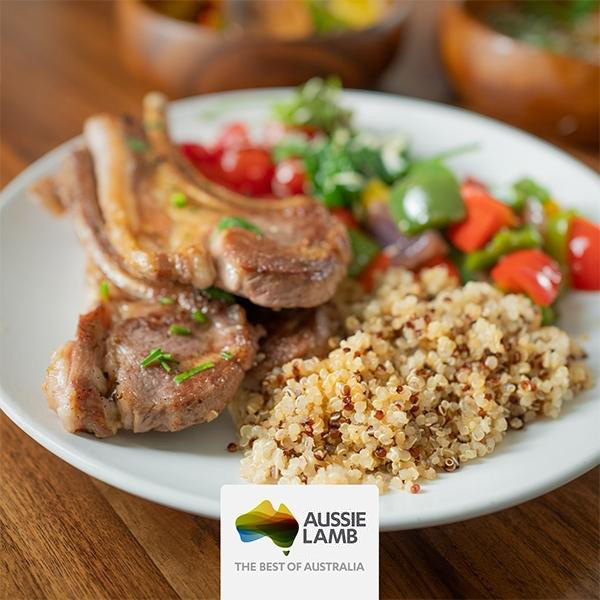Five ways to eat sustainably without cutting red meat
Simple Tips on eating the sustainable way without cutting red meat
Five ways to eat sustainably without cutting red meat
If you’re considering adopting a more sustainable diet, you don’t need to cut out red meat. Eating red meat and eating sustainably can actually go hand in hand.
When it comes to eating a sustainable diet, avoiding food waste is key. Food that isn’t eaten is a waste of all the resources it took to produce it. While production practices determine whether a food is sustainable or not, consumption practices determine whether a diet is sustainable. To help you eat more sustainably for your health and the planet’s health, here are five simple changes you can make, starting today.

1. Eat all foods in recommended amounts
It may sound obvious but the more food we consume, the more food we need to produce. And the more food we need to produce, the greater the impact on our natural resources and climate. That’s why eating foods in the recommended amounts is so important, and one of the simplest ways to achieve a more sustainable diet. With over 65% of Australians overweight and obese, eating all foods in recommended amounts is not only important for the environment, it’s also important for maintaining a healthy weight.
The Australian Dietary Guidelines are a good place to start to understand the types and amounts of foods we should be consuming for good health. In addition, don’t let super-sized meals force you to mindlessly overeat more than you need. When eating out, reduce portion size by sharing meals, or eating half and then taking the leftovers home to eat the next day.
2. Reduce food waste by only buying what you need
Food waste is a major problem in Australia. Each year, we waste around 312kg of food per person, equivalent to over $2,000 worth of groceries per household. Worryingly, food waste is responsible for approximately 3% of Australia’s annual greenhouse gas emissions, not to mention the wasted energy, land and water resources that go into producing food that’s ultimately thrown out.
There’s a simple solution to food waste, however, and that’s to only buy the foods and amounts you need. Plan out your meals and go shopping with a list and stick to it. Buy fresh produce that’s in season and store it appropriately when you get home (whether that’s in your fridge, cupboard or on the kitchen bench) so it doesn’t spoil before you can use it. Use up any leftovers and reduce your consumption of overly-packed, highly-processed foods as well. These are often full of sugar, fat and salt, so reducing their consumption is better for your health too.
3. Follow the Australian Dietary Guidelines
As previously mentioned, the Australian Dietary Guidelines are a great go-to resource for portion guidance. It’s not just important to eat the right amount, but also the foods that are recommended for good health. Based on scientific evidence, the Guidelines help us eat a healthy diet to reduce the risk of nutrient deficiencies and chronic diseases such as heart disease, type 2 diabetes and obesity.
For red meat lovers, there’s good news. The Guidelines provide recommendations on the amount of red meat that a healthy diet includes. They recommend eating 455g of lean, cooked red meat per week which is easy to do as part of three to four delicious healthy and balanced meals. That’s unprocessed meat such as mince, steak, chops, cutlets, roasts, slow-cooked cuts, diced and strips, and fresh sausages that are lean with reduced sodium. Confused about serving sizes? Our Red Meat Buying Guide can help you buy the right amount of red meat per serving for a variety of healthy, balanced meals.
4. Eat a variety of foods
Eating a variety of foods is important for a healthy and sustainable diet. In fact, it’s one of the principal recommendations of the Australian Dietary Guidelines. Eating red meat together with vegetables, whole grains and legumes in recommended amounts will increase your chances of getting enough essential nutrients and dietary fibre for good health.
Focus on incorporating more vegetables into each meal and making them the hero of the dish. Browse veggie-laden recipes online or in cookbooks, and challenge yourself to try a new recipe each week. Cuisines like Mexican, Japanese, Indian and Italian combine portions of meat alongside nutrient-rich vegetables, legumes and grains.
5. Try different cuts of meat
Instead of buying the same cut of meat each time, why not try a different part of the animal, such as a less popular cut? ‘Nose to tail’ eating enables us to enjoy as much of the animal as possible and helps to reduce food waste. Cooking with animal fat and using animal bones to make stock or broth is another way to use every part of the animal and ensure nothing goes to waste.
Whether you are buying your meat from your local butcher, farmers’ market or supermarket get a little curious and ask about where the livestock were raised, the sustainability techniques used, and the best cooking methods for the cut to help ensure the final result is as delicious as it can be.
Who knew? You can eat Australian red meat and care about the environment too! Eating more sustainably is possible by making a few simple changes. By reducing your portion sizes, only buying what you need, eating a variety of foods and experimenting with different cuts of meat, you can continue to enjoy red meat as part of a healthy and sustainable diet.

